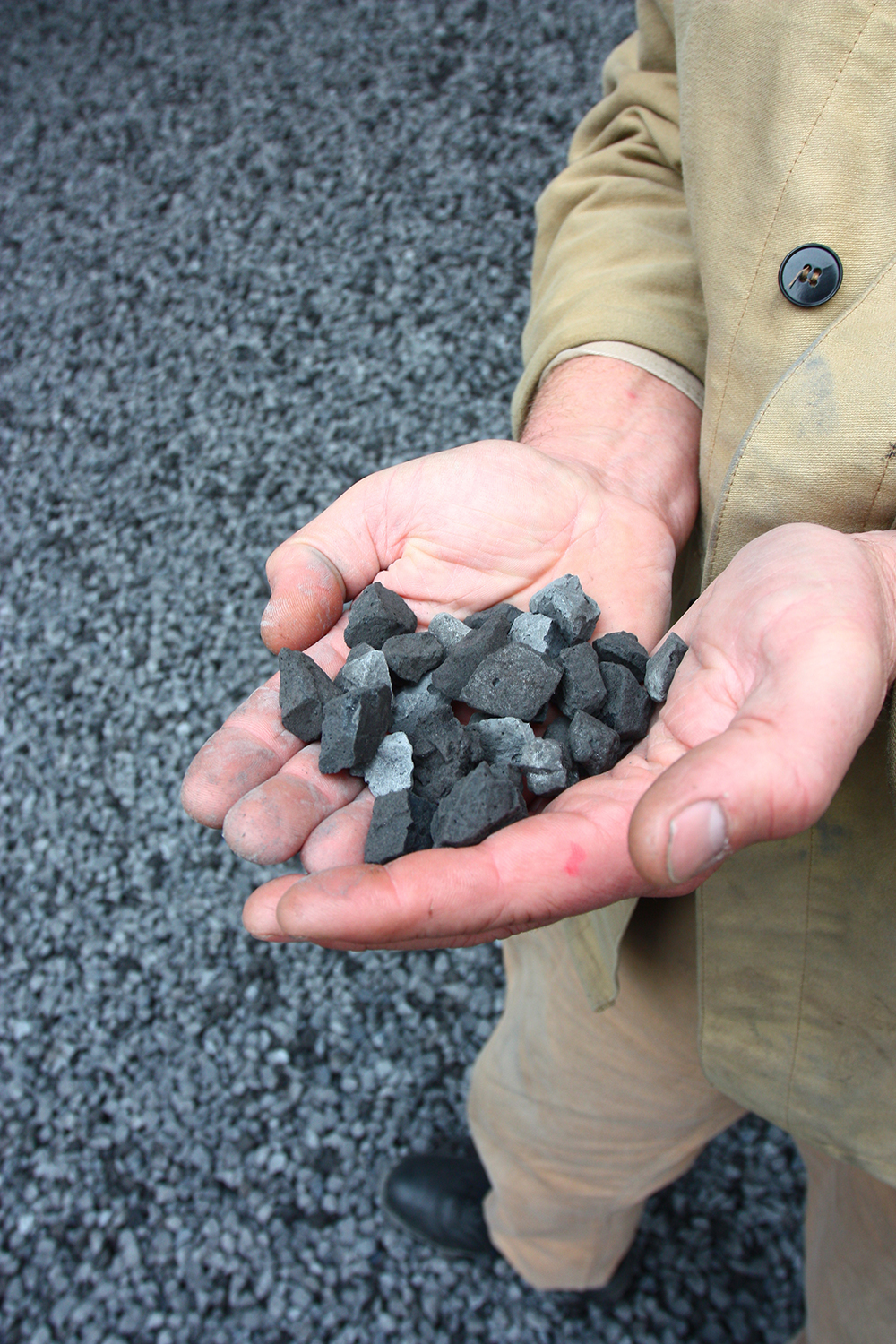Finding valuable materials in metallurgical dumps
Since metallic raw materials are scarce in Germany, it is reliant on imports. Yet some of these valuable materials are lying around unnoticed in dumps. Fraunhofer researchers are now compiling a Germany-wide registry of these resources, which reveals where these deposits are located and what metals they contain.
When it comes to important raw materials, Germany is dependent on imports – a situation that government and industry would love to change. Could we possibly have buried things in dumps that we could still use? Might the blast-furnace slag, converter dust, or blast-furnace gas sludge deposited in metallurgical dumps still contain some usable metal here and there? To this day, we simply do not have enough information.
Now the collaborative “REStrateGIS” project is shining a light into the gloom of German metallurgical dumps in the form of a nationwide resource registry. Coordinated by the Fraunhofer Institute for Environmental, Safety, and Energy Technology UMSICHT in Oberhausen, the registry reveals where metallurgical dumps, landfills and other disposal sites in Germany are located and ideally also what is deposited there. If you want to take a closer look at a site in the future, one mouse-click is all you will need to get a detailed view. Technically, nothing prevents the incorporation of additional information such as historical and current aerial photos, other photos of the site, and information about the main body of the dump and its contents. A total of four partners are involved in REStrateGIS, while the German Federal Ministry of Education and Research (BMBF) is funding the project.
The visual display is based on a geographic information system, into which the researchers have entered the relevant data. “Procuring the data is real detective work,” says Jochen Nühlen, scientist at UMSICHT. “We trawled through reams of documentation and slowly put together the pieces of the jigsaw.” The researchers scoured state archives and contaminated land registries, and pored over the archives of mining authorities and companies. And they were successful: Now the task of locating the sites has been completed and the foundation laid for the resource registry. In the process, the researchers developed a method that details the most efficient way of characterizing and describing dumps. “Our handbook contains useful information such as where to find the right data and who the relevant contact persons are,” says Nühlen.
While the UMSICHT researchers wade through the archives, their colleagues at EFTAS Fernerkundung Technologietransfer GmbH analyze satellite data for specific test regions, which include the Saarland, the western Ruhr area, and the Mansfeld Land region in Saxony-Anhalt. Using automated processes, they identify possible dump sites from the images. The UMSICHT scientists then compare this data against their own findings and send their conclusions back to EFTAS. “In this way, we are helping to optimize remote satellite identification for this task,” says Dr. Asja Mrotzek, group manager at UMSICHT. “In future, the method might conceivably be used for the detection of deposit sites worldwide – even in regions whose archives hold less data.”
The UMSICHT researchers have examined one such dump more closely together with colleagues from Martin Luther University Halle-Wittenberg, the Duisburg-based “Institut für Baustoffforschung FEhS” building materials research institute, and Stahlwerk Thüringen steelworks. After the researchers had interviewed experts, examined historical documentation, and inspected the grounds, they took samples, on which the per-
sonnel at FEhS carried out chemical analyses. This yielded a precise itemization of the materials the samples contained. The partners at Martin Luther University investigated the samples using reflection spectrometry measurements to discover the materials’ spectral fingerprint. By comparing the results with the chemical analyses, they create a database. “This allows people to do targeted searches: You could use the measurement technology on unknown dumps to get initial rough data about which materials the site contains,” explains Nühlen. “Then you could carry out further analyses on potentially interesting locations.”
So what do the dumps actually contain? “Mostly iron, depending on the process,” says Mrotzek. “Phosphate-rich slag was also buried there, which can be used directly as fertilizer for instance. Under certain conditions, waste material with high iron content can be reused in the iron and steel industry.” In a further stage, UMSICHT researchers will now carry out a cost-effectiveness analysis. Is it profitable to extract these materials from the dumps now or – depending on how the price for the raw material develops – only in five or ten years’ time? After all, it is not just a matter of extracting the raw materials for the sake of it – it also has to be profitable.
